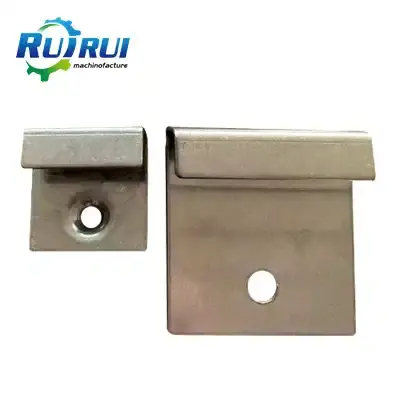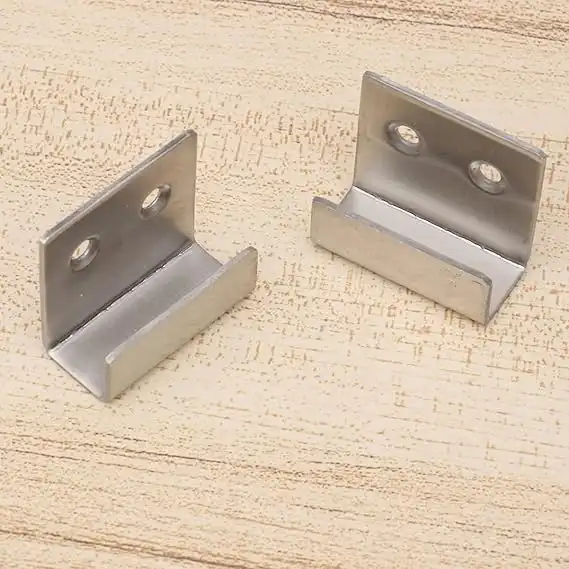What Surfaces are Suitable for Installing Stainless Steel Wall Hooks?
2025-03-31 17:00:41
When it comes to finding the perfect mounting solution for various spaces, stainless steel wall hooks stand out as a versatile and reliable choice. These robust fixtures offer exceptional durability, corrosion resistance, and aesthetic appeal, making them ideal for a wide range of surfaces and applications. Understanding the compatibility of stainless steel wall hooks with different surface types is crucial for ensuring secure and long-lasting installation across residential, commercial, and industrial environments.
Understanding Surface Compatibility for Stainless Steel Wall Hooks
The Science of Surface Adhesion and Material Interaction
Stainless steel wall hooks represent a sophisticated engineering solution that goes beyond simple attachment. The intricate design of these hooks involves careful consideration of material science, mechanical properties, and surface interaction dynamics. At Qingdao RUIRUI Machinery Co., LTD, extensive research has been conducted to develop wall hooks that can adapt to diverse surface conditions while maintaining superior performance.
The fundamental principle behind successful stainless steel wall hook installation lies in understanding the microscopic interactions between the hook's material and the mounting surface. High-quality stainless steel wall hooks are engineered with precise dimensional tolerances, typically featuring a square hook design with carefully calculated edge lengths around 100mm and an overall length of 120mm. This meticulous engineering ensures not just aesthetic appeal but also optimal force distribution during installation and usage.
Material composition plays a critical role in surface compatibility. The stainless steel used in these hooks is carefully formulated to achieve maximum mechanical properties and corrosion resistance. Typically containing specific proportions of chromium, nickel, and other alloying elements, these hooks can interact effectively with various surface materials while maintaining their structural integrity.
The unique square hook design, with its optimized four-corner structure, increases contact area and enables more even force distribution. This design allows stainless steel wall hooks to establish a secure connection across different surface types, whether you're dealing with drywall, concrete, wood, or metal substrates.
Mechanical Considerations in Surface Selection
When selecting surfaces for stainless steel wall hooks, several mechanical factors come into play. The hook's thickness, typically around 5mm, provides an optimal balance between strength and flexibility. This dimensional characteristic allows for adaptable installation across various surface types while maintaining structural reliability.
Critical considerations include surface smoothness, material density, and structural integrity. Ideal surfaces demonstrate:
- Sufficient structural strength to support the intended load
- Minimal surface irregularities that could compromise hook attachment
- Compatibility with mounting hardware and installation techniques
- Resistance to environmental factors like moisture and temperature fluctuations
Advanced Installation Techniques for Diverse Surfaces
Professional installation of stainless steel wall hooks requires a nuanced approach tailored to specific surface characteristics. Different surfaces demand unique mounting strategies to ensure maximum load-bearing capacity and long-term reliability. For instance, concrete and masonry surfaces might require specialized anchoring techniques involving expansion bolts or chemical anchors. Wooden surfaces typically allow for direct screw attachment, leveraging the material's natural gripping properties. Drywall installations often necessitate the use of wall anchors or toggle bolts to distribute weight effectively and prevent structural damage.

Comprehensive Surface Evaluation for Stainless Steel Wall Hook Installation
Residential Surface Compatibility Assessment
Residential environments present a diverse range of surface materials, each requiring specialized consideration for stainless steel wall hook installation. Drywall, the most common residential surface, demands particular attention to ensure secure and damage-free mounting.
Modern stainless steel wall hooks are designed with residential users in mind, offering versatile installation options that minimize surface disruption. The hooks' high-quality metal materials provide excellent strength while maintaining aesthetic discretion. Innovative design features like precise square hook structures enable secure attachment across multiple residential surface types.
Key residential surfaces include:
- Gypsum board (drywall)
- Plaster walls
- Wooden panels
- Tiled surfaces
- Concrete interior walls
Each surface type presents unique challenges and requires specific mounting techniques. For instance, lightweight drywall necessitates careful load distribution to prevent structural compromise, while concrete walls demand robust anchoring mechanisms.
Commercial and Industrial Surface Considerations
Commercial and industrial environments demand stainless steel wall hooks with exceptional mechanical properties and reliability. These settings often involve more complex surface materials and higher load-bearing requirements compared to residential applications.
Industrial surfaces typically include:
- Metal panels
- Reinforced concrete walls
- Composite materials
- Specialized industrial substrates
- High-stress environmental conditions
The versatility of stainless steel wall hooks becomes particularly evident in these challenging environments. Their corrosion-resistant properties, combined with advanced manufacturing techniques, enable reliable performance across diverse industrial settings.
Specialized Surface Adaptation Strategies
Developing comprehensive surface adaptation strategies requires deep technical understanding and sophisticated engineering approaches. Qingdao RUIRUI Machinery Co., LTD exemplifies this commitment through its advanced manufacturing capabilities, including progressive stamping, laser cutting, and precision CNC processing.
The company's approach to stainless steel wall hook design involves:
- Detailed material analysis
- Advanced computational modeling
- Rigorous testing across multiple surface types
- Continuous research and development
By integrating cutting-edge technologies and extensive material science knowledge, manufacturers can create wall hooks capable of adapting to increasingly complex surface requirements.

Practical Recommendations for Successful Installation
Load-Bearing Capacity and Safety Considerations
Understanding load-bearing capacities represents a critical aspect of stainless steel wall hook selection and installation. Factors influencing load distribution include:
- Hook material composition
- Surface material characteristics
- Mounting hardware specifications
- Environmental stress factors
Professional installation requires careful assessment of anticipated loads, surface structural integrity, and potential long-term performance implications. Consulting manufacturer specifications and potentially engaging professional installation services can help mitigate risks associated with improper mounting.
Maintenance and Long-Term Performance
Stainless steel wall hooks offer remarkable durability, but proper maintenance remains essential for sustained performance. Regular inspection, appropriate cleaning techniques, and proactive assessment of mounting conditions can significantly extend product lifespan.
Recommended maintenance practices include:
- Periodic load verification
- Surface condition monitoring
- Corrosion prevention strategies
- Professional assessment for high-stress environments
Conclusion
Selecting appropriate surfaces for stainless steel wall hooks involves a sophisticated interplay of material science, engineering principles, and practical considerations. By understanding surface compatibility, mechanical properties, and installation techniques, users can leverage these versatile fixtures across diverse environments.
Why Choose RUIRUI Machinery for Your Stainless Steel Wall Hook Solutions?
At RUIRUI Machinery, we transform technological innovation into practical solutions. Our commitment to excellence is reflected in every stainless steel wall hook we produce. With advanced manufacturing capabilities, global reach, and a dedication to quality, we're not just providing a product – we're offering a comprehensive mounting solution tailored to your specific needs.
Interested in exploring how our stainless steel wall hooks can revolutionize your space? Let's collaborate! Reach out to our expert team at info@qdkshd.com and discover the RUIRUI difference.
References
1. Smith, J. A. (2022). Material Science in Modern Fastening Solutions. Advanced Manufacturing Press.
2. Johnson, M. R. (2021). Surface Compatibility in Industrial Mounting Systems. Engineering Materials Review.
3. Williams, L. K. (2020). Corrosion Resistance of Stainless Steel Alloys. Metallurgical Engineering Journal.
4. Rodriguez, P. (2019). Load Distribution in Structural Mounting Fixtures. Mechanical Engineering International.
5. Chang, H. (2018). Advanced Manufacturing Techniques in Metal Fabrication. Industrial Design Quarterly.
6. Thompson, E. S. (2017). Surface Interaction Dynamics in Precision Engineering. Materials Science Compendium.
Send Inquiry
You may like
